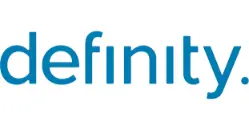With the rapid iterations in agile initiatives, the change communication objective in agile projects shifts from ‘how do I share information?’, to ‘how do I create communicative opportunities to generate more change?’
The biggest challenge for communications professionals on agile is the willingness to relinquish ‘control of the message’.
It seems that perfection is attained not when there is nothing more to add, but when there is nothing more to remove.
Antoine de Saint Exupery
Mastering this ‘letting go’ becomes the key to building visual and transparent communication as a core agile change capability.
Today’s communication challenges
To some extent this is secondary to professional challenges of
- How do we get people’s attention with so much going on?
- How do we create engaging change communication
- How do we efficiently keep up with the speed of information flow.
Mindset really does matter!
We’ve found that a mindset that is comfortable with letting go and a commitment to change communication that is visual and transparent will take you a long way on agile initiatives.
Visual Communication
Visual communication is essential to creating brain friendly change and combatting the epidemic of infobesity now. Did you know that the latest statistics are saying the average attention span is 8 seconds? Yikes!
Being proficient in visual communication means knowing how to present large chunks of information in brain friendly ways – think icons, infographics and micro videos.
Change practitioners need to be investing time exploring platforms like Canva and learning how to design for best impact. There are also many courses available on taking your powerpoint skills to the next level.
Transparent Communication
Transparent communication is also important as the rawness of it generates trust in the message being conveyed. When data on progress towards a change goal is show to all, it creates space for people to assist in achieving the change goal.
Leaders sharing authentic stories of their experience with the change vision and being transparent about their feelings generates relatability. When the people in your organisation relate to your leaders success is seamless!
There’s no argument – communication is integral to change. What served us well in the past however, may not serve us well today. That’s why visual and transparent communication is a core capability of the agile change practitioner and we cover 22 practices that assist and provide 50+ agile templates in our Agile Change Manager Certificate program.
Is this something you might want to take to the next level? Take our Agile Change Manager Scorecard quiz to find out how you rate!


































